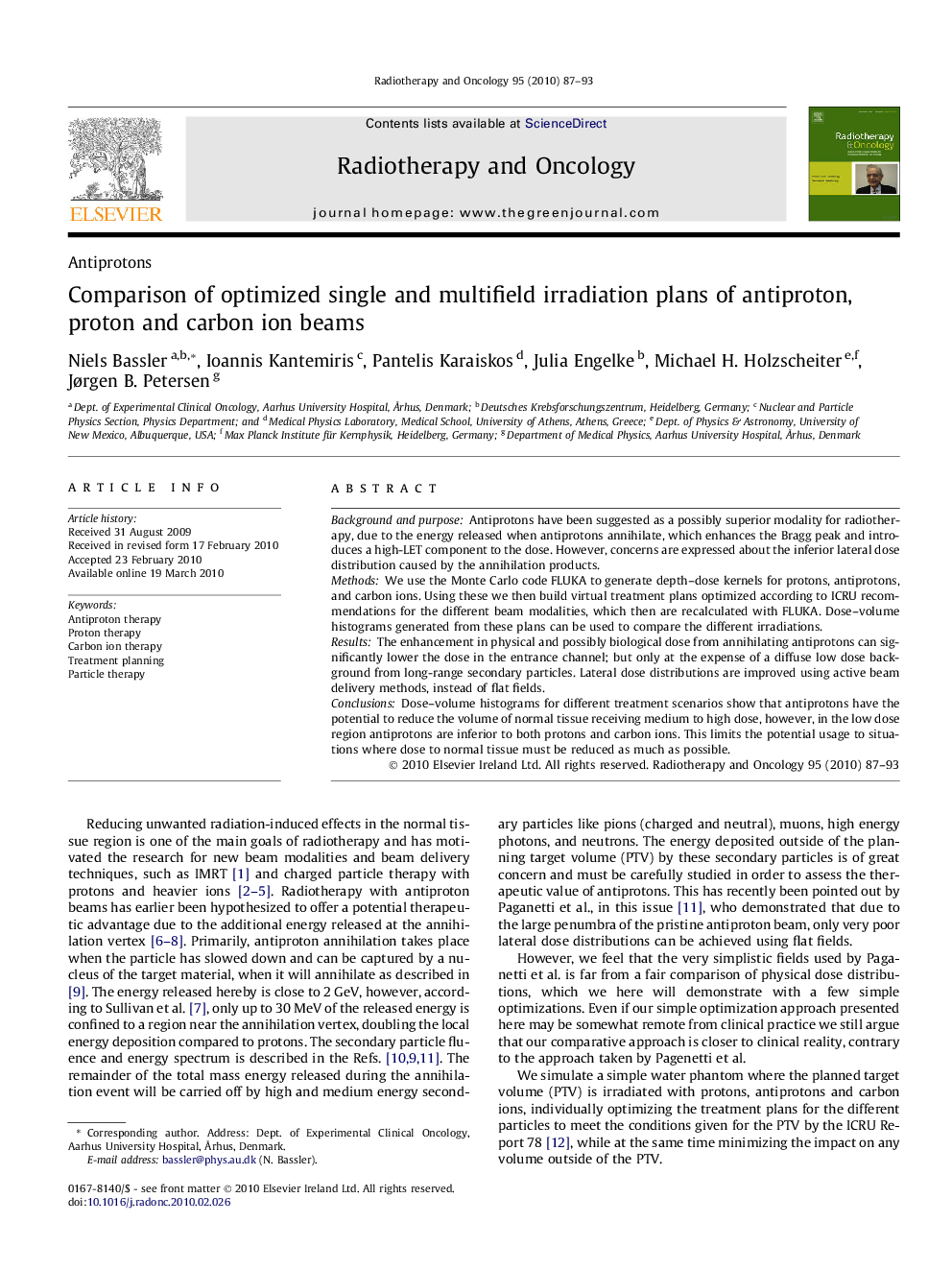| Article ID | Journal | Published Year | Pages | File Type |
|---|---|---|---|---|
| 2159468 | Radiotherapy and Oncology | 2010 | 7 Pages |
Background and purposeAntiprotons have been suggested as a possibly superior modality for radiotherapy, due to the energy released when antiprotons annihilate, which enhances the Bragg peak and introduces a high-LET component to the dose. However, concerns are expressed about the inferior lateral dose distribution caused by the annihilation products.MethodsWe use the Monte Carlo code FLUKA to generate depth–dose kernels for protons, antiprotons, and carbon ions. Using these we then build virtual treatment plans optimized according to ICRU recommendations for the different beam modalities, which then are recalculated with FLUKA. Dose–volume histograms generated from these plans can be used to compare the different irradiations.ResultsThe enhancement in physical and possibly biological dose from annihilating antiprotons can significantly lower the dose in the entrance channel; but only at the expense of a diffuse low dose background from long-range secondary particles. Lateral dose distributions are improved using active beam delivery methods, instead of flat fields.ConclusionsDose–volume histograms for different treatment scenarios show that antiprotons have the potential to reduce the volume of normal tissue receiving medium to high dose, however, in the low dose region antiprotons are inferior to both protons and carbon ions. This limits the potential usage to situations where dose to normal tissue must be reduced as much as possible.
